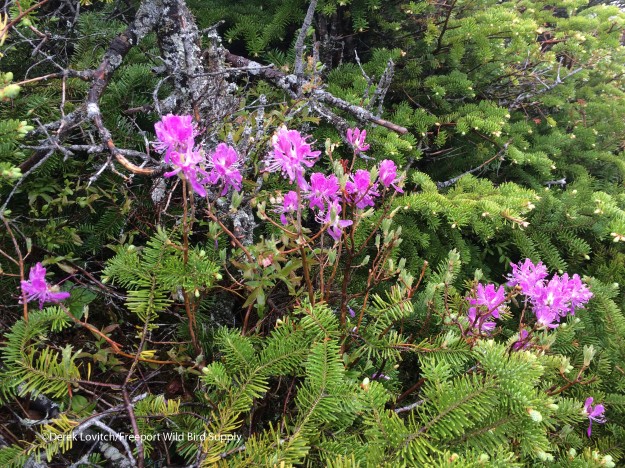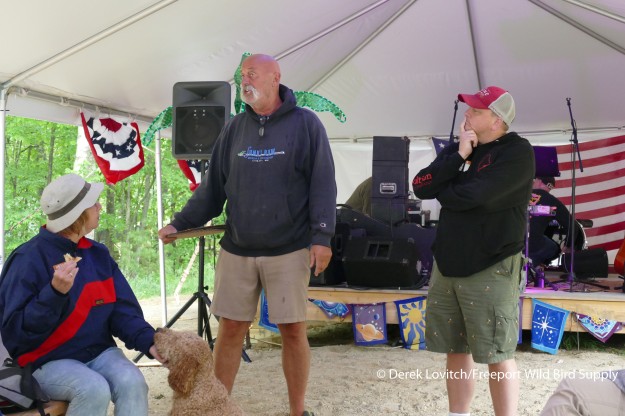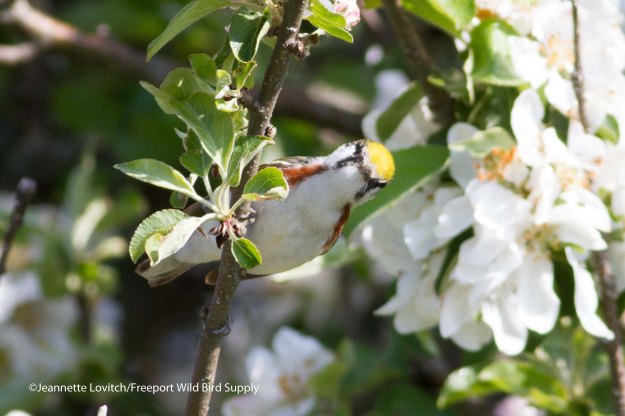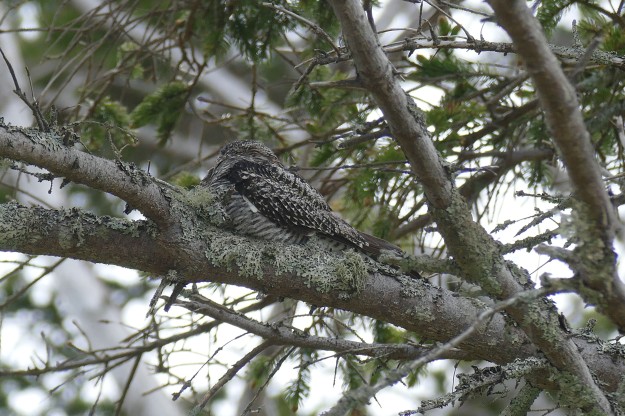
Perhaps if our annual “Bicknell’s Thrushes of the White Mountains” tour wasn’t so darn successful each year, I could justify relieving myself of the stress and high blood pressure I suffer from this tour! As I often say, if I could control the weather, I would probably do something a little more lucrative than bird tours, but since I can’t, I might as well lead tours for one of the most enigmatic and range-restricted breeding birds in North America. It doesn’t help that it’s also a real challenge to see – especially in a group and especially without an overnight backpacking trip – and the places we go have some of the wildest weather on the continent!
Every year, as we descend Mount Washington – where the thrushes are getting harder and harder to see (perhaps due to declines, over-playing of tapes, or, more and more, I believe due to competition with the Swainson’s Thrushes marching up the mountains) without everyone getting a satisfactory view – I say “never again.” I was especially worried this year, as the forecast for rapidly strengthening winds through the night jeopardized our second effort.
But before we ascended the mountains, we began our birding by heading from Freeport straight to the White Mountains. Pondicherry National Wildlife Refuge was our destination. Jeannette came along on the tour for the first time this year – mostly just to find out where we eat our delicious meals! – and so as co-leader, she took half the group for some casual birding in the area, yielding great looks at an American Bittern, Pied-billed Grebe, and Yellow-bellied Flycatcher among many others.
My half of the group went for a hike. We heard an Olive-sided Flycatcher, had a Coyote walk out into the open and check us out before bounding off, and oh, yeah, we had this:



And these breathtaking views.

Even more remarkable was the fact that the Presidentials, including the summit of Mount Washington, were crystal clear all day.
Once again together, we made another check of the Whitefield airport marsh, where the Pied-billed Grebe was still calling, and all five species of swallows (Tree, Barn, Cliff, Bank, and Northern Rough-winged) were zooming around as steady rain began to fall.
Back in Gorham, we had a little R&R time, visited with this Mourning Dove that was nesting on a light fixture at our hotel’s restaurant (Everybody loves bacon! Or, is this dove’s name “Bacon?”), and then had another delicious meal with the gracious staff and owners of the Saalt Pub and Libby’s Bistro.

They got us on the road quickly, and fueled up, we joined Ernie and the Mount Washington Stage Company for an after-hours van trip up to the summit. Remember those earlier images of a clear summit? Well, that was then…


Ice left over from a storm a few days prior.
And with winds rapidly approaching 50mph, Ernie held the doors, and we hopped back into the van to get to work. Enough of this tourist stuff!

Unfortunately, the winds were picking up at lower elevations as well. Some of my favorite spots for the thrush were just whipping with wind. We heard two birds calling at one spot, and two more a short distance below, but we had little hope of seeing them until we found some shelter.
And when we did, the fog was so dense that we could barely see. Apparently, neither could the thrushes, as one bird flew from behind me and either hit me in the head as it flew across the road, or I simply felt the wind from its wings as it made a last-second turn. Needless to say, that was a remarkable close encounter, and the folks who were looking in the right direction at the right time were witness to my near death-by-thrush experience.
A short while later, it actually perched up briefly, but just in the wrong place for most of the group – including myself – to get a view. At our last stop, at least 4 birds were singing, and most everyone at least glimpsed one or more birds in flight, but it was getting late, getting dark, and getting quite cold. It was time to head downhill and back to Gorham.
While just about everyone saw the bird “well enough to count,” and the birds’ vocal performance was about as good as I have ever experienced on Mt. Washington, the lack of total satisfaction was palpable.
My concern about the next day’s weather increased, especially with the need for a better view of the reclusive thrush. And come morning, with winds already howling in Gorham, I was resigned to Cannon Mountain simply closing their tram line.
So we birded the Trudeau Road area, enjoying whatever was not blowing away. More sheltered patches of woods yielded several Canada Warblers, at least six singing Yellow-bellied Flycatchers, and one of the longest looks at a Northern Waterthrush you’ll ever get: and it was about as high as you’ll ever see one as this bird was singing from the very top of a 40 foot tall dead tree!
We looked at plants like Rhodora, and enjoyed the wind for at least limiting the presence of mosquitoes.

Arriving at Cannon Mountain, I was relieved to find the tram open, and we were in the first car up to the summit. While the winds were reasonable, the fog was not, and it began to pour.

But the downpour was short lived, so we moved on through the fog…

…and then we heard a Bicknell’s Thrush call nearby. And then it was perched on an understory branch, calling, and we were all looking right at it! It stayed there for a solid 30 seconds, allowing prolonged, and breathtaking views. It was satisfying.
I was relieved. And as if on queue, the fog began to lift.

And our next loop around the trail yielded another singing thrush, but also stellar views!


We celebrated with coffee, hot chocolate, and/or cinnamon rolls, before triumphantly riding the tram back down the hill. Smiles were abundant.
A couple of short birding stops on our way through the mountains yielded Alder Flycatchers and a variety of warblers, but we didn’t turn up a Mourning Warbler we were seeking. We did, however, see a Moose! So that’s a win.
Our traditional celebratory lunch at Moat Mountain Brewery in North Conway saw the group in high spirits, and enjoying great beer and food. I celebrated with gluttony.

Also as per tradition, I make a stop or two on the way back to Freeport, and after hearing chatter about covered bridges, I decided to skip more mediocre mid-afternoon birding in strong winds and kept people guessing as we weaved around the back roads to Fryeburg, ending up at the historic Hemlock Bridge.




A Broad-winged Hawk flew over the river with about half of a snake, and Chipping Sparrows sung from the parking area. But it was time to head home, and with our last fun stop, we iced the cake of another wildly successful “Bicknell’s Thrushes of the White Mountains” adventure. I guess we’ll just have to do it again next year!















































